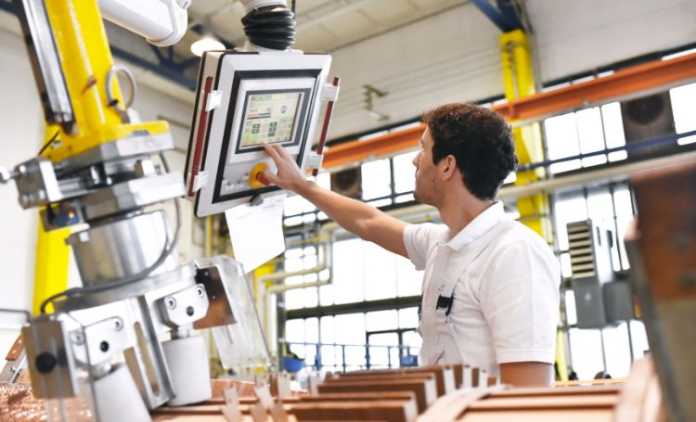Are your designs struggling to withstand extreme environments? Achieving durable and high-performing components can be a challenge in demanding applications.
Fortunately, this comprehensive guide will unlock seven practical strategies for leveraging Vespel and enhancing durability and performance in your designs.
Understanding the Unique Properties of Vespel
Diving into the world of Vespel, we uncover three core properties that elevate its durability and performance.
Firstly, Vespel is resilient to heat and chemicals and capable of withstanding harsh conditions. This resistance broadens its application, fitting it into a sizzling engine or a frigid spacecraft.
Secondly, Vespel flaunts low friction characteristics. This translates into a smooth performance, reducing wear and tear and prolonging the lifespan of the components it forms.
Lastly, its dimensional stability sets Vespel apart. Unlike materials that warp under varied conditions, Vespel retains its shape, guaranteeing reliable performance.
Collectively, these traits equip Vespel for a plethora of design applications. It’s no wonder why engineers and designers lean towards Vespel for projects demanding durability and performance. Whether in industrial machinery or outer space explorations, Vespel is the choice that endures, standing the test of time and environment.
Choosing the Right Vespel Grade for Your Design
Vespel is no one-trick pony. Its various grades, each with unique properties, further enrich its applicability.
For instance, the SP-1 grade offers excellent physical properties at cryogenic to moderate temperatures, a perfect match for designs exposed to severe cold. On the other hand, the SCP-5000 grade provides unmatched mechanical properties at high temperatures, making it the ideal companion for components operating in hot environments.
Choosing the proper grade hinges on understanding the design’s requirements and the environment it will operate. Think of it like selecting the right gear for a hike; each path demands different equipment.
In essence, understanding the specificities of your design allows for a tailored selection of Vespel grades. Making an informed choice can be the difference between acceptable and outstanding performance.
Optimizing Design for Material Strength
Enhancing material strength is not just about choosing the right grade of Vespel; the design plays a crucial role. Picture this – even the sturdiest materials can falter if the design doesn’t do it justice.
Design optimization begins with factoring in Vespel’s properties. Like a maestro conducting an orchestra, understanding each element’s contribution is key.
Consider stress points in your design. Avoid sharp corners that might become stress concentrators. Instead, opt for rounded edges, which help distribute the load evenly, just like a well-laid bridge distributing weight.
Additionally, strive for a balance between thickness and weight. Thicker parts can handle more stress but may increase the component’s weight. It’s a delicate dance of strength and efficiency that the designer must choreograph.
Maximizing Durability with Proper Vespel Machining Practices
How you machine Vespel is as significant as your design. Imagine trying to paint a masterpiece with a worn-out brush; it doesn’t matter how great your vision is if your tools aren’t need to be up to the task.
Effective Vespel machining practices include cutting, drilling, and milling. From selecting the correct tools to setting the proper speed, each step influences the component’s final durability and performance.
One crucial tip – always use sharp tools for cutting Vespel. Dull tools generate heat and might degrade the material. It’s like using a sharp knife to cut a tomato. The sharper it is, the less force you need, and the less damage is done.
Similarly, proper maintenance of machining equipment ensures consistency in output quality. Mastering Vespel machining practices are instrumental in extracting its maximum potential. It’s the equivalent of a chef mastering cooking techniques to bring out the best flavors.
Effective Quality Assurance with the Dependometer
Imagine having a reliable compass in a dense forest, guiding you towards consistent quality. That’s what our Dependometer does for quality assurance with Vespel.
Quality assurance is a cornerstone in cementing Vespel’s durability and performance. Just as a music conductor ensures harmony among different instruments, a Dependometer verifies the consistent quality of Vespel.
So, how does it impact the component’s lifespan and reliability? Think of it as a health check-up. Consistent quality assurance flags any potential issues before they become big problems, like routine health screenings. This helps maintain the component’s durability and performance over an extended period.
Remember, consistency is key to quality. Imagine baking cookies. Maintaining consistent temperature ensures each batch is as good as the last.
Considering Vespel’s Performance in the Design’s Life Cycle
The performance of Vespel isn’t just a one-time affair. It’s more like a marathon than a sprint, where endurance matters. Evaluating its long-term performance in the lifecycle of your design is critical.
Factors like maintenance, fuel consumption, and longevity also weigh in. Similarly, considering wear and tear over time can greatly aid in improving Vespel’s durability and performance in your designs.
Regular assessments are key. Like servicing a car to keep it running smoothly, inspecting your Vespel components routinely can ensure they maintain top performance.
Timely maintenance, too, plays a role. Just as you would repair a small crack in a dam before it becomes a disaster, acting swiftly on the signs of wear can preserve Vespel’s performance and extend the life of your design.
Leveraging Vespel in Advanced Applications
Think of Vespel as an actor ready to take on a variety of roles in your designs. Its versatility has seen it shine in numerous advanced applications, enhancing durability and performance.
Consider a spacecraft venturing into the unforgiving expanse of space. In such extreme conditions, traditional materials might not hold up. But Vespel, with its high heat and chemical resistance, can thrive.
Similarly, in high-precision manufacturing equipment, the stability and low wear of Vespel ensure consistent, high-quality output.
In conclusion, Vespel’s potential is immense. It’s like a wild stallion, ready to unleash its power given the right opportunity. As a designer, it’s up to you to harness this potential and push the boundaries of what’s possible. So, go forth and create your masterpiece with Vespel.
































